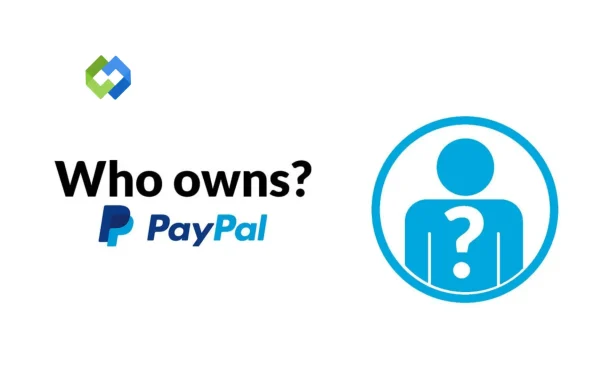Ownership affects how a company operates and grows. The people or groups who own PayPal have a big say in its decisions. They influence its policies, features, and long-term goals. Ownership also affects the company’s reputation and customer trust. For example, investors may push for more innovations or cost-saving measures.
Table of Contents
Table of Contents
PayPal’s History
PayPal began in 1998 as a small project aimed at making online payments simple and secure. It was founded by Max Levchin, Peter Thiel, and Luke Nosek under the name Confinity. Initially, the company focused on creating software for digital wallets. However, after merging with Elon Musk’s company, X.com, in 2000, the focus shifted entirely to the PayPal service. The merger helped the brand grow, and PayPal became a widely recognized platform for online transactions.
In 2002, PayPal was acquired by eBay to improve its payment systems for online auctions. This partnership allowed PayPal to reach millions of eBay users worldwide, solidifying its position as a leader in online payments. During this period, PayPal focused on expanding its features and global reach, becoming available in several countries.
In 2015, PayPal separated from eBay, becoming an independent, publicly traded company. This move allowed it to innovate further and partner with other businesses beyond eBay. Over the years, PayPal has added features like mobile payments, cryptocurrency transactions, and integration with platforms like Google Pay and Apple Pay.
Ownership Changes Over Time
PayPal’s ownership journey began with its founding in 1998 by Max Levchin, Peter Thiel, and Luke Nosek. Initially, it was a small startup named Confinity. In 2000, it merged with Elon Musk’s company, X.com, which focused on online financial services. This merger combined innovative ideas and gave PayPal the boost it needed to grow.
In 2002, eBay acquired PayPal for $1.5 billion to enhance its payment options for online auctions. Under eBay, PayPal became the primary payment method on the platform and expanded globally. This partnership played a significant role in PayPal’s massive growth and popularity in the early 2000s.
In 2015, eBay decided to spin off PayPal into an independent, publicly traded company. This separation allowed PayPal to explore new opportunities and partnerships beyond eBay. Today, PayPal operates as a standalone entity, with its ownership spread among institutional investors, individual shareholders, and mutual funds.
Current Ownership Structure
Publicly Traded Company
PayPal is a publicly traded company listed on the NASDAQ under the ticker symbol “PYPL.” Its ownership is spread across various shareholders who own its stock, including large institutions and individual investors.
Major Shareholders
Institutional investors such as Vanguard Group and BlackRock are among the largest shareholders of PayPal. These organizations own significant stakes, giving them influence over the company’s strategic decisions.
Role of Individual Shareholders
In addition to institutional investors, PayPal’s ownership includes individual stockholders and employees with stock options. This diverse ownership structure ensures that a wide range of perspectives contribute to the company’s growth.
Leadership and Ownership Balance
PayPal’s leadership team and board of directors manage its operations, ensuring that shareholder interests are prioritized. This balance between ownership and leadership helps the company maintain stability while focusing on innovation and expansion.
Leadership at PayPal
Key Executives
PayPal’s leadership team includes experienced professionals who guide its vision and strategy. Dan Schulman serves as the CEO, playing a vital role in driving the company’s growth and innovation. Other key executives include the CFO, who manages financial strategies, and the CTO, who oversees technological advancements. Each executive brings expertise in their field, ensuring PayPal remains competitive in the digital payment industry.
Role of the Board of Directors
The board of directors provides oversight and strategic guidance to PayPal. It includes experienced leaders from various industries who help shape the company’s policies and long-term goals. Their role is crucial in maintaining PayPal’s focus on growth and shareholder value.
Leadership’s Impact on Growth
Under strong leadership, PayPal has expanded its services, introduced new features, and partnered with major platforms worldwide. The leadership team’s focus on innovation and customer satisfaction has solidified PayPal’s position as a trusted payment platform globally.
Leadership Philosophy
PayPal’s leadership emphasizes inclusivity, innovation, and sustainability. This philosophy drives decisions that prioritize user experience and adaptability to market changes. It ensures that the company stays ahead in the competitive digital payment industry.
Impact of Ownership on PayPal’s Operations
Influence of Institutional Investors
Institutional investors, such as Vanguard Group and BlackRock, play a significant role in PayPal’s operations. Their large ownership stakes allow them to influence strategic decisions, such as expanding services or adopting new technologies. Their involvement often pushes PayPal toward sustainable growth and innovation.
Focus on Innovation and Growth
Ownership by diverse shareholders, including institutions and individuals, drives PayPal’s focus on innovation. Shareholders demand value and competitive positioning, encouraging the company to explore new markets, introduce features like cryptocurrency integration, and enhance mobile payment options.
Operational Stability
The distributed ownership structure ensures operational stability. PayPal benefits from a mix of long-term institutional investors and dynamic individual shareholders. This balance helps the company weather market fluctuations while continuing to deliver reliable services.
Strategic Decision-Making
Ownership influences the direction of PayPal’s strategic goals. Shareholders’ interests often shape priorities such as expanding partnerships, improving user security, and entering emerging markets. This ensures PayPal remains competitive and aligned with market demands.
Conclusion
PayPal has gone through significant changes in ownership since its founding. From its early days as Confinity to being acquired by eBay and later becoming independent, PayPal’s journey reflects its growth and adaptability. Today, PayPal operates as a publicly traded company with a diverse ownership structure.
Institutional investors and individual shareholders influence PayPal’s strategies and decisions. This balance ensures stability and drives innovation. With strong leadership and a wide range of stakeholders, PayPal continues to lead the digital payment industry, focusing on growth, security, and user satisfaction.














